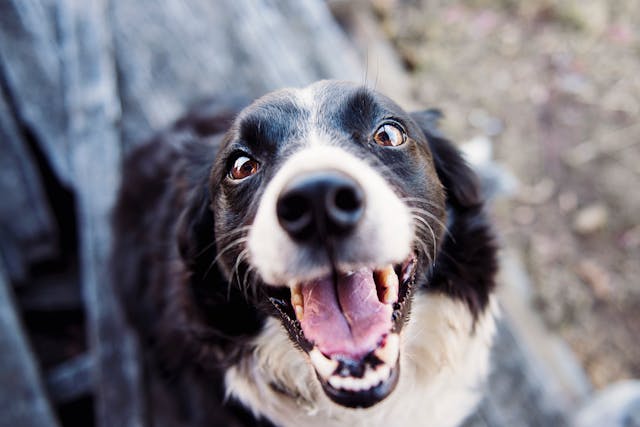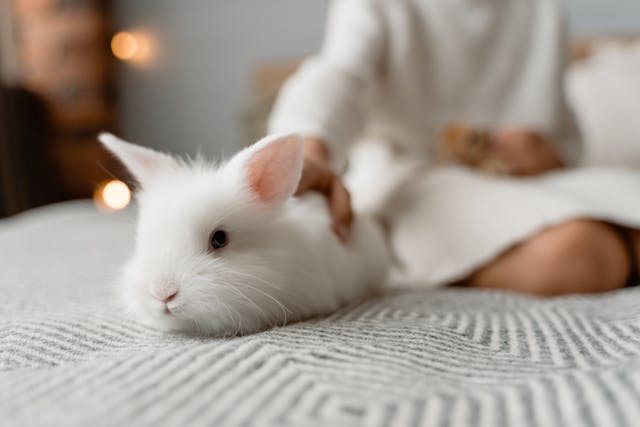The Language of Love: Understanding Your Pet's Body Language
Our pets may not speak our language, but they communicate volumes through their body language. Whether you have a dog, cat, rabbit, or bird, learning to understand their signals helps strengthen your bond and ensures their well-being.

Understanding Dog Body Language
Dogs are expressive creatures, using their tails, ears, eyes, and body posture to convey emotions.
Signs of Happiness:
-
Relaxed body and face
-
Wagging tail (slow and wide = friendly; fast and stiff = alert/excited)
-
Play bow (front legs lowered, rear end up)
-
Soft, relaxed eyes
Signs of Stress or Fear:
-
Tucked tail or ears pinned back
-
Avoiding eye contact
-
Licking lips or yawning (as a calming signal)
-
Raised hackles (fur standing up)
Signs of Aggression or Discomfort:
-
Stiff posture with a hard stare
-
Growling or baring teeth
-
Standing tall with weight shifted forward
-
Snapping or lunging
Pro Tip: Always respect a dog's signals—forcing interaction when they’re uncomfortable can lead to fear-based reactions.
Understanding Cat Body Language
Cats are more subtle communicators, but their tail, ears, and body posture provide clues.
Signs of Contentment:
-
Slow blinking (a sign of trust and affection)
-
Purring while relaxed
-
Kneading with paws
-
Tail upright with a slight curve at the tip
Signs of Stress or Fear:
-
Dilated pupils
-
Flattened ears against the head
-
Tucked tail or puffed-up fur
-
Hiding or crouching low to the ground
Signs of Aggression or Irritation:
-
Flicking or thumping tail
-
Direct stare with constricted pupils
-
Swatting or biting
-
Arched back with raised fur
Pro Tip: A cat showing its belly is not always an invitation to pet—it’s a sign of trust, but some cats dislike belly rubs.
Understanding Small Pets (Rabbits, Guinea Pigs, etc.)
Smaller pets also use body language to express emotions.
Happy & Relaxed:
-
Binkying (rabbits doing joyful jumps and twists)
-
Guinea pigs "popcorning" (little jumps of excitement)
-
Lying stretched out with relaxed body
Fearful or Stressed:
-
Freezing in place
-
Rapid breathing or hiding
-
Teeth chattering (especially in guinea pigs)
Irritated or Defensive:
-
Thumping hind legs (rabbits signal danger or frustration)
-
Lunging or nipping when feeling threatened
-
Raised fur or aggressive stance
Pro Tip: Approach small pets gently and let them come to you to build trust.

Understanding Bird Body Language
Birds use feather positioning, vocalizations, and body posture to communicate.
Happy & Relaxed:
-
Singing, chirping, or soft whistling
-
Fluffed-up feathers (when at rest)
-
Gently bobbing head (especially in parrots)
-
Preening (cleaning feathers, a sign of comfort)
Fearful or Anxious:
-
Wide eyes with constricted pupils
-
Flattened feathers against the body
-
Rapid breathing or trembling
-
Avoiding interaction or retreating
Aggressive or Overstimulated:
-
Biting or lunging
-
Raised feathers with an open beak
-
Wing flapping aggressively
Pro Tip: Birds need social interaction—talk to them calmly and respect their space when they signal discomfort.
Strengthening Your Bond Through Understanding
By paying attention to your pet’s body language, you can build a deeper, more trusting relationship. Here’s how:
-
Observe patterns in behavior and responses.
-
Respect their signals—don’t force interaction.
-
Use positive reinforcement to build trust.
-
Spend quality time together to strengthen your bond.
Your pet is always communicating—are you listening?












